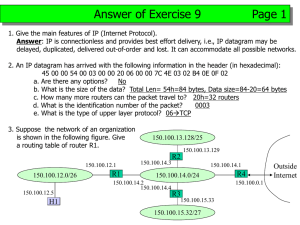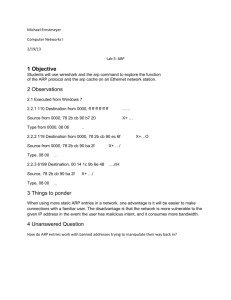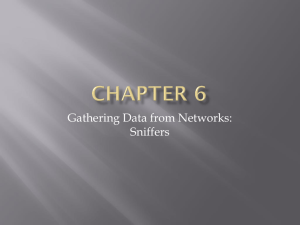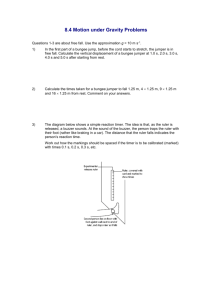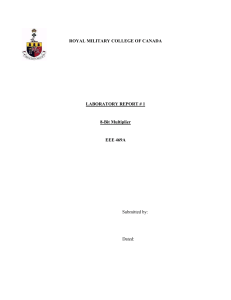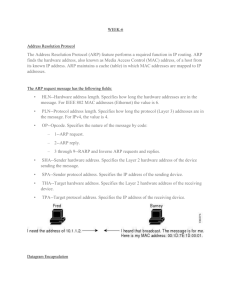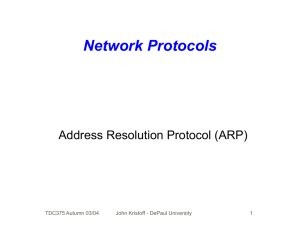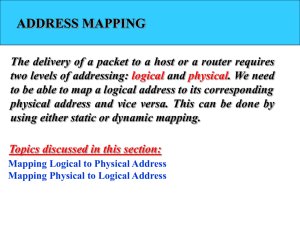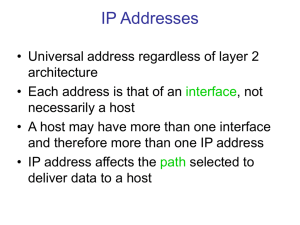PresentationTopicARPattack
advertisement
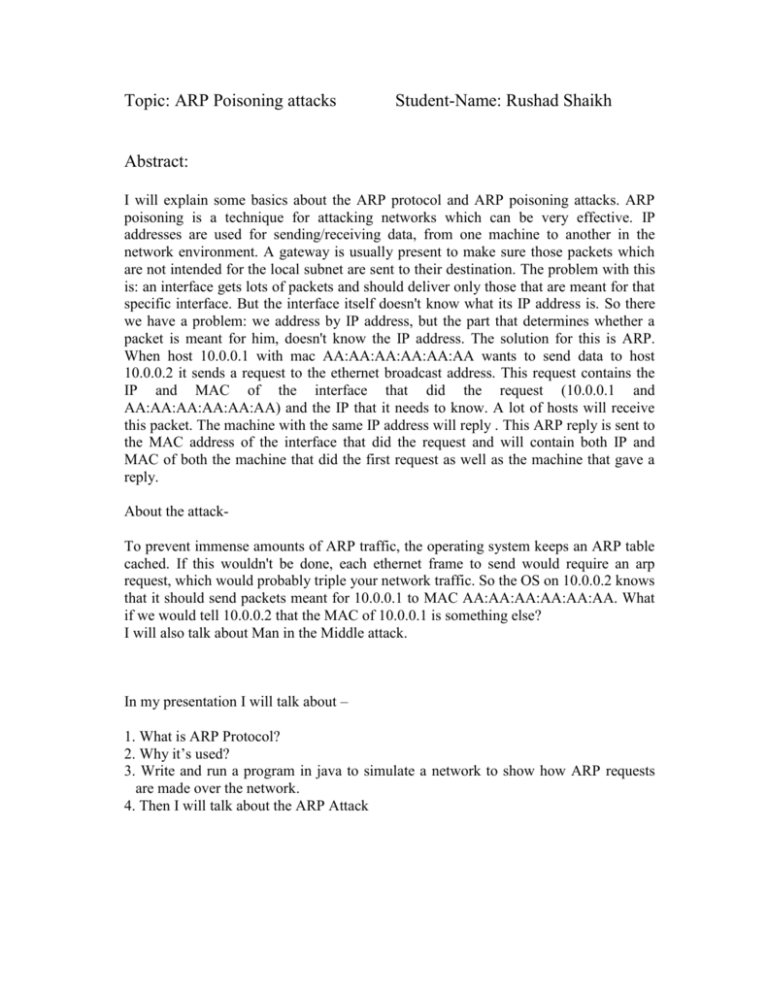
Topic: ARP Poisoning attacks Student-Name: Rushad Shaikh Abstract: I will explain some basics about the ARP protocol and ARP poisoning attacks. ARP poisoning is a technique for attacking networks which can be very effective. IP addresses are used for sending/receiving data, from one machine to another in the network environment. A gateway is usually present to make sure those packets which are not intended for the local subnet are sent to their destination. The problem with this is: an interface gets lots of packets and should deliver only those that are meant for that specific interface. But the interface itself doesn't know what its IP address is. So there we have a problem: we address by IP address, but the part that determines whether a packet is meant for him, doesn't know the IP address. The solution for this is ARP. When host 10.0.0.1 with mac AA:AA:AA:AA:AA:AA wants to send data to host 10.0.0.2 it sends a request to the ethernet broadcast address. This request contains the IP and MAC of the interface that did the request (10.0.0.1 and AA:AA:AA:AA:AA:AA) and the IP that it needs to know. A lot of hosts will receive this packet. The machine with the same IP address will reply . This ARP reply is sent to the MAC address of the interface that did the request and will contain both IP and MAC of both the machine that did the first request as well as the machine that gave a reply. About the attackTo prevent immense amounts of ARP traffic, the operating system keeps an ARP table cached. If this wouldn't be done, each ethernet frame to send would require an arp request, which would probably triple your network traffic. So the OS on 10.0.0.2 knows that it should send packets meant for 10.0.0.1 to MAC AA:AA:AA:AA:AA:AA. What if we would tell 10.0.0.2 that the MAC of 10.0.0.1 is something else? I will also talk about Man in the Middle attack. In my presentation I will talk about – 1. What is ARP Protocol? 2. Why it’s used? 3. Write and run a program in java to simulate a network to show how ARP requests are made over the network. 4. Then I will talk about the ARP Attack
